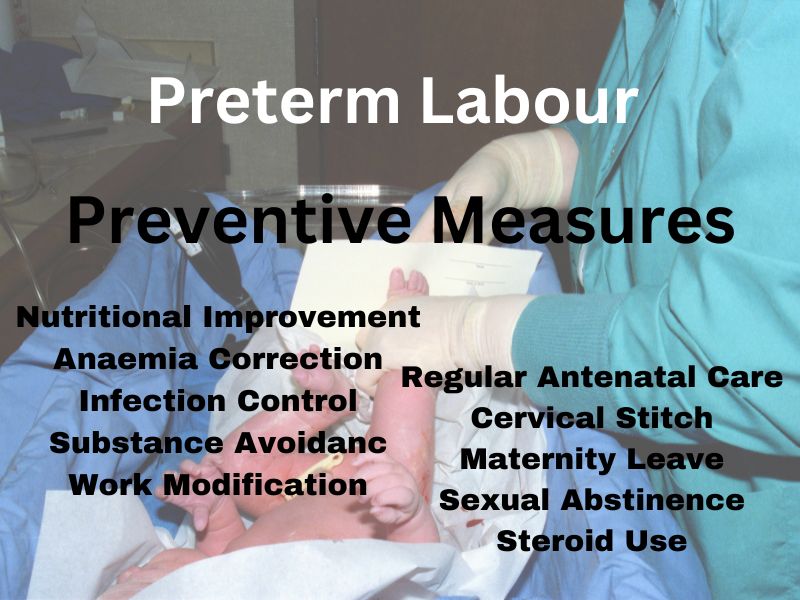What are the warning signs of preterm labour and how we can prevent it? warning signs includes low- backache, baby pushing down- pressure, abnormal cramping, diarrhoea, fluid leaking from vagina, uterine contractions. it can be prevented by Improve nutritional , correct anaemia, avoid tobacco, alcohol, heavy manual, sexual intercourse in last trimester of pregnancy.


Preterm Labour is defined as one where the labour starts before 37th completed weeks (<259 days). While currently the prevalence or incidence varies between 10 to 15%, it is witnessing an increase. While the reasons in around 50% of the cases are not known, in the rest it is either due to previous history of MTP / Previous preterm delivery (15% Risk), pregnancy following assisted reproductive techniques, chronic Smoking / Alcoholism, low socio economic status / Poor nutritional status / underweight, maternal stress, obesity, infections: UTI / STDs, Perio dontal disease. Apart from behavioural aspect even hypertension, polyhydromnios, uterine anomalies, cervical incompetence and multiple pregnancies can also cause pre-term delivery.
One of the effects of Preterm labour is prematurity and low birth weight of the baby which in turn will increase the risk of birth asphyxia, Respiratory Distress Syndrome, Birth Trauma etc. Further, preterm babies are at increased risk of perinatal mortality and morbidity calling for advanced NICU care ad use of surfactant. Earlier the birth, lesser the chances of survival rate decreases with less gestational age calling for care and prevention of preterm delivery.
Some of the warning signs of preterm labour are
- Menstrual like cramps constant or recurrent, just above the pubic bone
- Low, dull backache (constant and recurrent)
- Pressure as though the baby is pushing down, feels heavy
- Abnormal cramping coupled with diarrhoea
- Increase or change in vaginal discharge (may be mucus, watery, light, or bloody)
- Fluid leaking from the vagina
- Uterine contractions that are 10 or less minutes apart (may be painless usually described as the baby “balling up”)
- Short cervix –less than 1 cm on per vaginal examination
- Lower uterine segment thinned (developed). Presenting part is deep in the pelvis
Preventive measures to avoid preterm labour are
- Improve nutritional status of the woman before pregnancy
- Timely correction of anaemia
- Special care and attention to avoid septic foci- bactenuria, STDs, gingival infection
- Limit/avoid drugs and substance abuse like tobacco, alcohol, coffee, tea, intoxicants
- Avoid heavy manual/ stranious work during pregnancy
- Provide regular antenatal care
- Timely cervical stitch for suspected short cervix/ previous history of preterm delivery
- Working women should be advised to proceed on maternity leave by 32 weeks or earlier if previous history of preterm delivery
- Avoid/ abstain from sexual intercourse in last trimester of pregnancy
- Prophylactic use of steroids at around 32 wks in Assisted Reproductive Technique conception


Dr. Manjula H M,
Obstetrician & Gynaecologist,
Bengaluru











